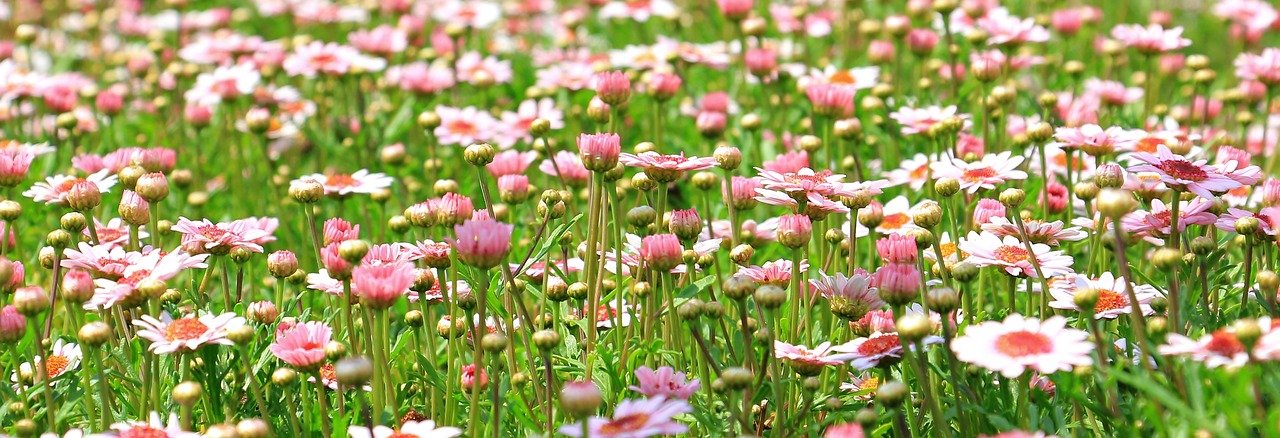
Are you looking to add some greenery to your living space but don’t have a lot of room? A vertical garden bed might just be the solution you’re looking for! This innovative gardening technique allows you to make the most of your vertical space by growing plants vertically rather than horizontally. In this article, we will guide you through the steps of creating your own vertical garden bed, from selecting the right location to choosing the perfect plants. Get ready to transform your space into a lush oasis!

Choosing the Right Location
Assessing available space
When choosing a location for your vertical garden bed, it’s important to assess the available space you have. Consider the size of the area and ensure that it can accommodate the height and width of the vertical garden bed. Look for a space that is easily accessible and will allow you to maintain and care for your plants effectively.
Considering sunlight requirements
Plants need sunlight to thrive, so it’s crucial to consider sunlight requirements when selecting a location for your vertical garden bed. Observe the area throughout the day and determine how much sunlight it receives. Choose a spot that provides the appropriate amount of sunlight for the plants you intend to grow. Some plants may require full sun, while others may prefer partial shade.
Checking for proper drainage
Proper drainage is essential for the health of your plants. Ensure that the location you choose for your vertical garden bed has good drainage. Observe the area after rain or watering to make sure water doesn’t pool or collect in the area. If the soil is consistently wet, it may indicate poor drainage. In such cases, consider amending the soil or choosing a different location for your vertical garden bed.
Selecting the Best Plants
Choosing suitable plant varieties
When selecting plants for your vertical garden bed, it’s important to choose suitable plant varieties. Consider the specific needs of each plant, such as sunlight requirements, soil type, and temperature tolerance. Opt for plants that are well-suited to vertical gardening and can thrive in a confined space.
Considering vertical growth habits
Vertical gardens rely on plants that have a vertical growth habit. Look for plants that naturally grow upwards and have the ability to climb or trail. Some popular choices include ivy, climbing roses, and trailing vines. These plants not only add visual interest to your vertical garden bed, but they also maximize the use of vertical space.
Ensuring compatibility of plants
When selecting plants for your vertical garden bed, it’s important to ensure compatibility. Some plants may have aggressive growth habits or may not thrive when planted together. Consider the growth rates and needs of each plant and choose combinations that will coexist harmoniously. Doing so will prevent overcrowding and competition for resources.

Determining the Size and Shape
Measuring available area
Before building your vertical garden bed, it’s crucial to measure the available area. This will help you determine the appropriate size and shape for your vertical garden bed. Use a tape measure and take accurate measurements of the dimensions of the area. Consider any limitations such as nearby structures or obstructions that may affect the size and shape of your vertical garden bed.
Deciding on the desired height and width
Based on the available area and your preferences, decide on the desired height and width of your vertical garden bed. Consider factors such as the type of plants you intend to grow, the space you have available, and the aesthetic appeal you want to achieve. Keep in mind that taller structures may require additional support to ensure stability.
Considering the weight and stability
When determining the size and shape of your vertical garden bed, it’s important to consider the weight and stability. Take into account the weight of the soil, plants, and structures. Ensure that the chosen location can support the weight of the vertical garden bed. If needed, reinforce the area or choose lighter materials for the structures.
Preparing the Support Structure
Choosing the appropriate support system
The support system is an essential component of a vertical garden bed. Choose an appropriate support system based on the type of plants you’ll be growing and the desired aesthetic. Options include trellises, wire grids, or custom frames. Consider the weight and size of the plants to ensure the support system can accommodate their growth.
Building a sturdy frame
If you opt for a custom frame, it’s important to build a sturdy structure. Use high-quality materials such as wood or metal and ensure proper construction to provide stability and durability. Consider the weight of the plants and soil and design the frame accordingly. Reinforce the corners and add extra support if necessary.
Attaching hooks, brackets, or wires
Depending on the support system chosen, you may need to attach hooks, brackets, or wires to secure your vertical garden bed. Follow the manufacturer’s instructions or guidelines for proper installation. Ensure that the attachments are secure and can hold the weight of the plants as they grow.

Preparing the Container or Planter
Selecting appropriate containers
Choose containers that are suitable for your vertical garden bed. Consider the size and depth of the containers based on the root systems of the plants you’ll be growing. Ensure the containers have drainage holes to allow excess water to escape. Additionally, consider the material of the containers and choose ones that are durable and weather-resistant.
Ensuring proper drainage
Proper drainage is crucial for the health of your plants. Before planting, ensure that the containers have adequate drainage holes. This will prevent water from accumulating and potentially causing root rot or other moisture-related issues. If needed, add additional drainage material such as rocks or gravel at the bottom of the containers.
Creating a nutrient-rich soil mix
To provide a favorable growing environment for your plants, create a nutrient-rich soil mix. Use a combination of quality potting soil, compost, and organic matter. This will provide essential nutrients and promote healthy growth. Ensure that the soil mix is well-draining to prevent waterlogged conditions.
Installing and Mounting the Frame
Positioning the frame against the wall or structure
Position the frame against the chosen wall or structure. Ensure that it is centered and level before proceeding. Take into account any obstructions such as windows, doors, or nearby plants. Consider the visibility and accessibility of the vertical garden bed and choose a position that meets your preferences.
Securing the frame in place
Secure the frame in place using appropriate methods. Depending on the support system chosen, this may involve screws, bolts, or other fasteners. Follow the manufacturer’s guidelines or hire a professional if needed. Ensure that the frame is stable and can withstand the weight of the plants and the elements.
Checking for stability and adjustments
After installing the frame, check for stability and make any necessary adjustments. Ensure that the frame is securely attached to the wall or structure and doesn’t wobble or sway. Test its stability by gently shaking the frame. If you notice any instability, reinforce the attachments or make necessary modifications.
Planting and Arranging the Plants
Starting with suitable plants
When planting in your vertical garden bed, start with suitable plants. Consider the specific needs and preferences of each plant and ensure they are compatible with the growing conditions in your vertical garden. Plant the tallest or largest plants at the bottom and the trailing or smaller ones towards the top. This arrangement will ensure proper light distribution and optimize the use of space.
Arranging the plants for aesthetics and growth
As you plant your vertical garden bed, consider both aesthetics and plant growth. Arrange the plants in a visually pleasing manner, taking into account factors such as color, texture, and size. Additionally, consider the growth habits of the plants and how they will interact with each other. Ensure that taller plants don’t shade or overshadow smaller ones.
Providing support structures for climbing plants
If you have climbing plants in your vertical garden bed, provide support structures such as trellises or wires. These structures will allow the climbing plants to anchor and grow upwards. Install the supports as needed and guide the plants towards them as they grow. Regularly check and adjust the supports to ensure they can accommodate the growth of the climbing plants.
Watering and Irrigation
Determining the watering needs
Proper watering is essential for the health of your plants. Determine the watering needs of each plant based on its species and environmental conditions. Some plants may require more frequent watering, while others may be drought-tolerant. Consider the moisture retention of the soil and water accordingly, avoiding overwatering or underwatering.
Choosing an appropriate irrigation system
To efficiently water your vertical garden bed, consider installing an appropriate irrigation system. Options include drip irrigation, soaker hoses, or even automated systems. Choose a system that can deliver water directly to the plant roots and minimize water wastage. Ensure that the chosen system can be easily maintained and adjusted as needed.
Monitoring soil moisture and adjusting watering
Regularly monitor the soil moisture in your vertical garden bed and adjust watering as necessary. Stick your finger into the soil to test its moisture level. If it feels dry, water the plants adequately. If the soil feels damp or waterlogged, reduce watering and improve drainage. Pay attention to the needs of individual plants and make adjustments accordingly.
Maintenance and Care
Regular pruning and trimming
Regular pruning and trimming are necessary to maintain the health and aesthetics of your vertical garden bed. Trim any dead, damaged, or overgrown foliage to promote new growth. Prune climbing plants to guide their growth and prevent them from overtaking other plants. Regularly remove weeds or unwanted plants to reduce competition for resources.
Fertilizing as needed
Fertilizing your plants can help provide essential nutrients for healthy growth. Follow the specific fertilizer recommendations for each plant variety. Apply fertilizers sparingly and avoid overfertilization, which can lead to nutrient imbalances or harm the plants. Consider using slow-release fertilizers or organic options for a more sustainable approach.
Checking for pests and diseases
Regularly check your vertical garden bed for pests and diseases. Look for signs of infestation such as chewed leaves, discolored foliage, or unusual growth patterns. If you notice any issues, promptly take appropriate measures such as using organic pest control methods or seeking professional advice. Prune and remove affected parts of plants to prevent the spread of diseases.
Harvesting and Enjoying
Knowing when and how to harvest
As your plants mature, you’ll be able to enjoy the fruits of your labor. Learn about the specific harvest times for each plant variety and how to properly harvest them. Some plants may require gentle picking, while others may need to be cut. Harvest at the appropriate stage of ripeness to ensure the best flavor and quality.
Enjoying the beauty and productivity of vertical garden bed
Once your plants are established and thriving, take a moment to enjoy the beauty and productivity of your vertical garden bed. Observe the vibrant colors, abundant foliage, and any flowers or fruits that may have come forth. Bask in the satisfaction of creating a thriving vertical garden and reap the rewards of your efforts by indulging in homegrown produce or simply admiring the visual appeal of your creation.





